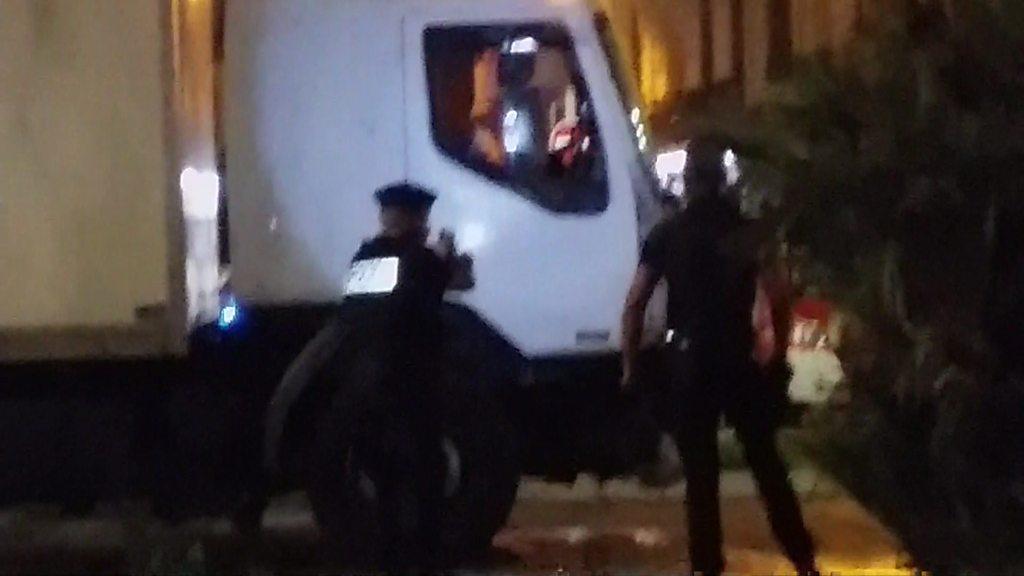Nice: The 'heartbreaking' picture of the attack
- Published
[Warning: this story contains a distressing image]
It is a picture that for many came to symbolise the devastation of the attack in Nice: a doll lying on the street next to a covered body.
At least 10 children and teenagers were among those killed by a driver who slammed a lorry through a crowd gathered on the Promenade des Anglais, in the southern French city.
Bastille Day is a national holiday in France, marking the start of the French Revolution, and it is when families gather to watch big fireworks displays.
The identity of the victim in the picture is not known, but the image, taken by Reuters photographer Eric Gaillard, has been widely shared on social media.
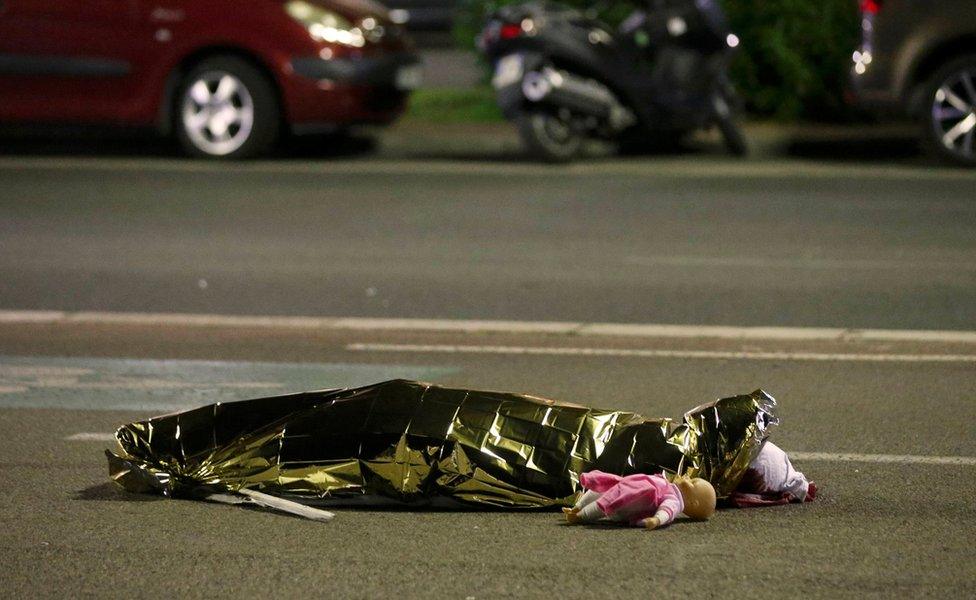
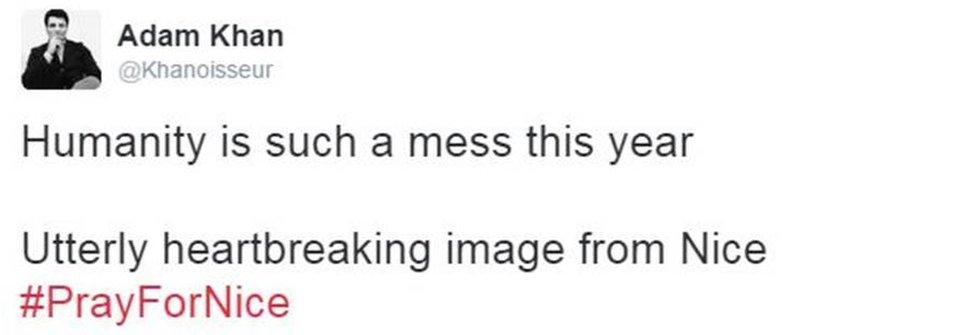


This tweet in French says: "The image that shows the horror of the attack in Nice... A child and their doll"
Italy's Prime Minister, Matteo Renzi, external, one of the many foreign leaders to express solidarity, said: "We are used to seeing postcards from Nice full of beauty, not images of death with a doll near a destroyed stroller. Reacting is a moral duty."
Some 30,000 people were thought to have been attending the celebrations along the promenade, a seafront boulevard lined with palm trees and wide walking areas.
This illustration, external by Brazilian cartoonist Carlos Latuff, based on the picture, has also been shared hundreds of times on Twitter.
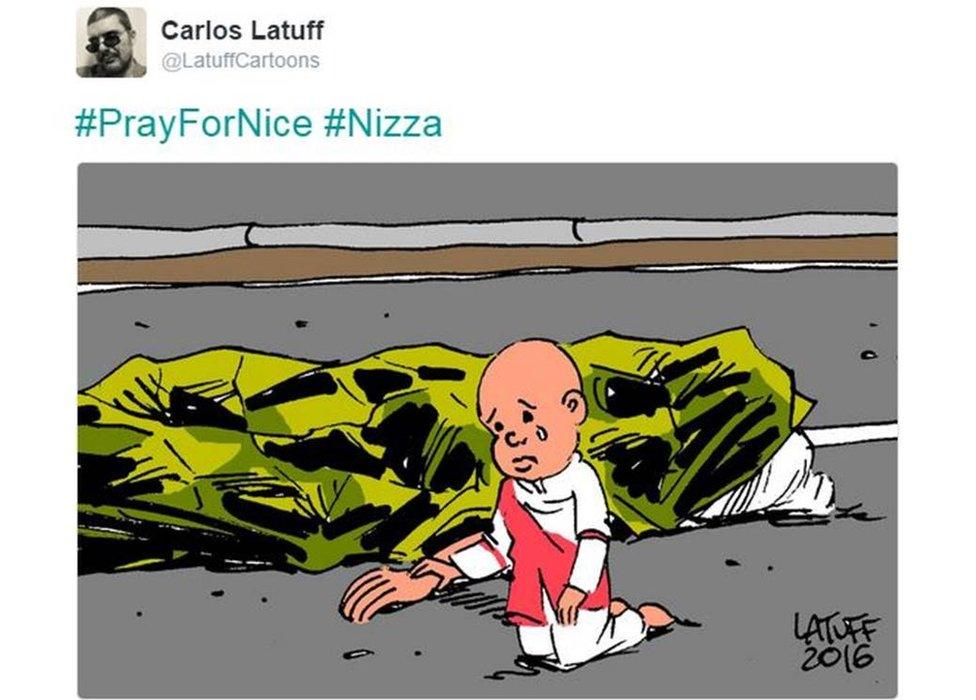
Some have likened the image to that of Alan Kurdi, the three-year-old Syrian boy who died on a Turkish beach, face down in the sand. It became a symbol of the refugee crisis, last year.
Unlike other recent attacks, many of the victims in Nice are children and teenagers. A local hospital said dozens of them have been treated.
Other pictures have also shown broken toys, slippers and objects that were left behind.
"As the lorry passed by me a young boy of 10 or so just managed to leap to one side and escape by inches.
"Tragically dozens of those on foot, young and old alike, were not so lucky," Simon Coates, a solicitor from Leeds told the BBC.



"Virtually everyone I saw on the promenade was either dead or beyond real help with truly terrible injuries."
France's government has offered psychological counselling to the young and their relatives, and some of them have shared their experiences.
A journalist from the French newspaper Le Monde, external told the story of eight-year-old Aya, who returned to the beach front to wait for a missing friend after the attack.
Their two families were to meet in the evening for the fireworks, she says, but the friend did not come.
So Aya came back to their meeting point in the daytime, hoping to see her friend again, the journalist added. But her friend did not arrive.
- Published15 July 2016
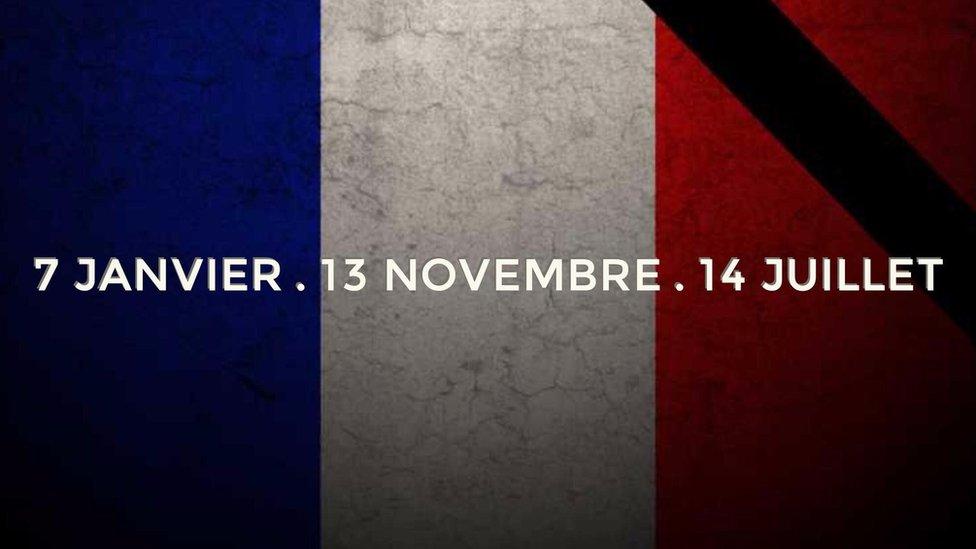
- Published15 July 2016

- Published19 August 2016
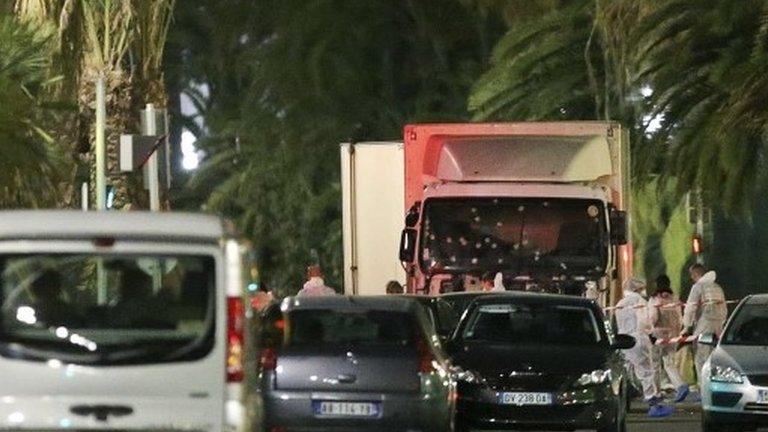
- Published15 July 2016

- Published15 July 2016
